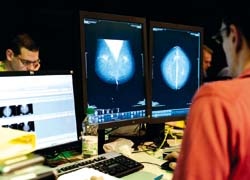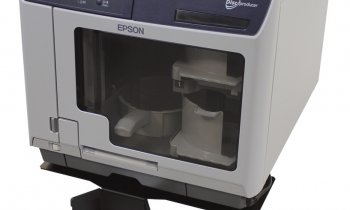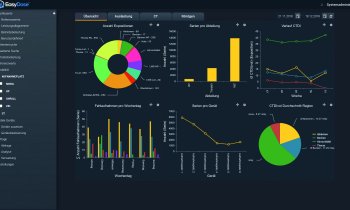Italian network leads EU cross-community e-health
For five days a renovated tram barn in Vienna became one of Europe's hottest internet centres as more than 230 healthcare IT engineers gathered for five days of intensive systems tests during the 10th annual IHE-Europe Connectathon. John Brosky reports

Integrating the Healthcare Enterprise (IHE; Brussels) creates profiles to ensure interoperability between healthcare systems in 11 domains including, radiology, document sharing, and lab reporting. This year 94 different, and sometimes competing, healthcare information systems were tested to demonstrate they can share images, physician reports and vital patient data.
Telekom Austria sent its A-team, which is usually assigned to international ski events, to string more than 25 kilometres of cable, and hard wire dozens of long tables where the engineers huddled over their laptops during marathon sessions.
‘When you are testing interoperability, it is rare that the problem is only on one side. That is the big advantage for Connectathon because both companies can work out the problems and solve it quickly,’ said Claudio Saccavini with Arsenal.it. At the Connectathon he led a consortium of five companies connecting 36 hospitals in Italy’s Venato region for five days of final tests before implementation of their systems for cross-community access (XCA).
Where document sharing within a regional or community healthcare technology network using the IHE cross-enterprise integration profile (XDS) has grown substantially, the sharing of documents using XCA between these closed communities is still in its infancy.
This consortium of Italian companies from the Venato region are now completing the second phase of a e-health project named Health Optimum, designed to facilitate consultations for four different medical specialties by linking smaller community hospitals with expert physicians and surgeons at seven regional medical centres.
With Euro 20 million in EU funding under the Framework Six Program, the Health Optimum consortium also includes 23 healthcare providers in the Veneto Region and five European Member States: Italy, Spain, Denmark, Sweden and Romania.
Four medical specialties to be enabled with this new capability:
• Neurosurgical Tele-counselling: To give fast and formalised answers to neurosurgical counselling requests for emergency cases of cranial trauma, from a peripheral hospital to the neurosurgical centre.
• Telelaboratory: With the introduction of new devices it is possible to carry out tests on site and then to receive immediately the lab results.
• Oral Anti-coagulant Therapy: A service dedicated to patients under anti-coagulant therapy, aiming to reduce patients’ travels while maintaining high quality analysis and specialist support.
• Stroke Management:
A consultative modality to facilitate care of patients with acute stroke at underserviced hospitals by specialists at stroke centres.
The modality being tested at the European Connectathon was for Stroke Management where a physician of a community hospital or clinic identifies symptoms of a potentially suspect acute stroke for a patient in an emergency-receiving setting.
After evaluating the case, the local neurologist completes a form, digitally signs it and sends the form with computer tomography (CT) images to a neurologist at the central reference hospital for authorisation to begin a tPA treatment and to arrange for the patient’s transfer.
The electronic form contains a patient’s personal data and necessary clinical and medical histories.
The consulted neurologist writes and electronically signs his opinion and then sends this form to the peripheral unit, either contradicting the diagnosis or confirming the condition should be treated with tPA therapy and agreeing to accept the patient at the reference hospital. The step-by-step development of the Health Optimum network include realisation of the exchange of documents and images within each of the seven areas inside the Venato region, and then the integration of the platform with the introduction of gateways according to IHE XCA integration profile.
This integration of community hospitals with full system interoperability at their regional level then allows the exchange of documents and images between area networks, bringing for the first time the potential for sharing the local hospital requests among seven expert centres.
‘Imagine that within the Venato region, the reference centre at Treviso is overloaded with work and the local hospital physician needs to ask a different neurologist for an opinion,’ said Claudio Saccavini. ‘It sounds so simple when you say it, but it is very complicated to accomplish. Here at Connectathon,’ he added, ‘we are testing this switch for the physician located in the Treviso community network to consult with a neurologist in another community network within the region, a referral out-of-the community, using the IHE approach.
‘There are a lot of factors that need to come together, which becomes easier to do at Connectathon,’ he said, adding: ‘The idea is that once we test the platform, if we need to add another company with a cardio vascular or imaging device, then we have the tools and the experience to test these new actors and see whether they are able to enter into the system.’
Claudio Saccavini said Connectathon requires the five companies in the consortium to work with other companies they have never met, either pulling images and documents or sending data to systems for the first time. ‘These other systems are not necessarily focused on telemedicine, and it is very useful to test between different systems.’
01.07.2009











